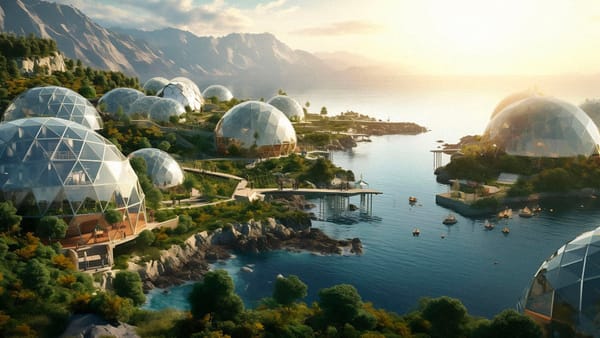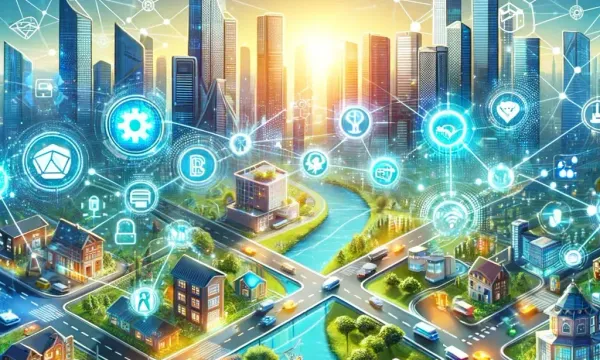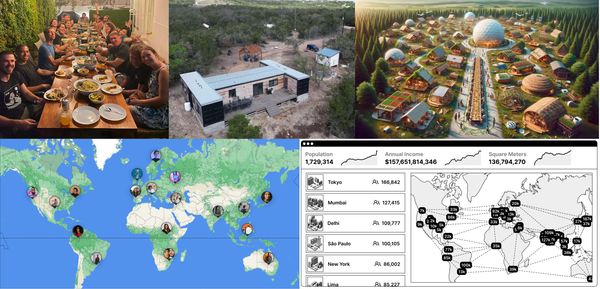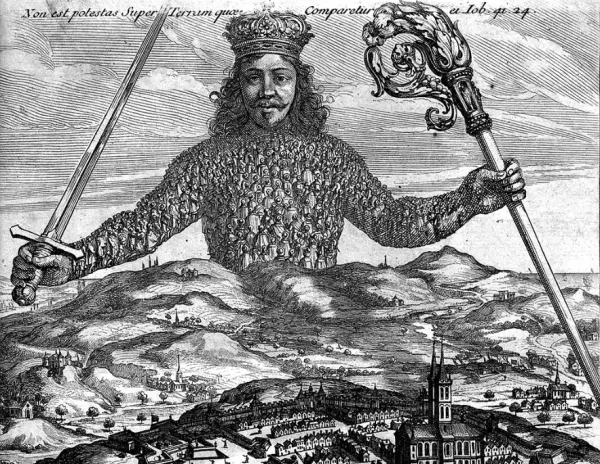Building Cabin's Network City
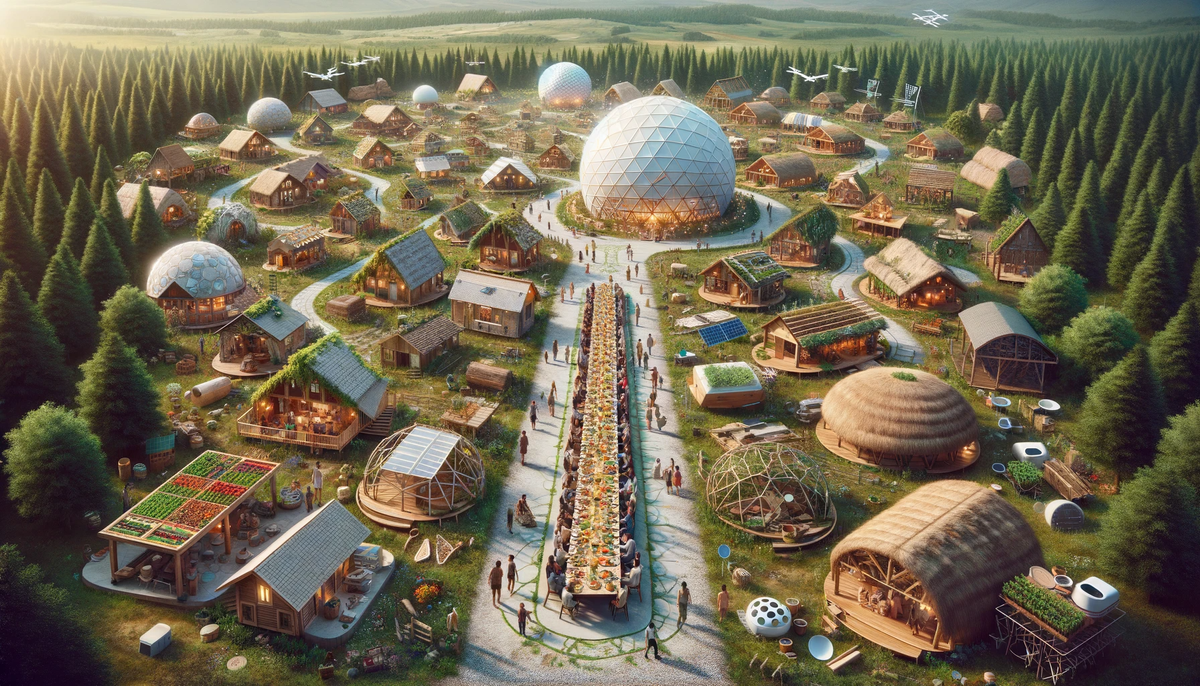
Cabin is building a network city for our Citizens, who span the globe and gather in person. Citizens have passports that give them access to our City Directory of people and places that will make you feel at home anywhere you go. Over the next few years we'll grow to 5,040 founding Citizens who collectively govern our city and grow a network of neighborhoods around the world.
This document outlines our core beliefs and plans to build a city:
- Why we’re building a city
- The problem
- The solution
- Who we are
- Origin story
- Community
- What we believe
- Live in Community
- Integrate with Nature
- Create Together
- How we’re doing it
- Census, Citizenship, and the City Directory
- Governance, Economy, and Culture
- Where we’re going
- Next 5 Years
- Next 5 Decades
- Next 5 Centuries
Why we’re building a city
The problem
A city is a densely settled area with clearly defined boundaries whose members work primarily on non-agricultural tasks. Cities share a culture, economy, and governance structure. Throughout history, they have served as fountains of human creativity and prosperity. They are where people come together to build new economies and ways of life.
But we haven’t built new cities in a long time. Phoenix, founded in 1868, is the youngest major American city. Established major cities across the world haven't changed much in the past century as development has ground to a halt. In the last 50 years, we’ve built our urban and suburban environment around cars and disconnected single family homes:

While this is a global phenomenon, it's particularly clear in the United States. Americans are currently less happy with their lives than they’ve been in 50 years. There seem to be two main causes: increasing loneliness and decreasing standard of living.
The increase in loneliness has roots in the decline of America’s social associations of the 20th century, like the Rotary Club, Boy Scouts, churches, and bowling leagues. The book Bowling Alone shows membership and participation in social and civic organizations swelled in the middle of the twentieth century and then went into steep decline starting in the mid-late 1960s.
This coincides with the rise of the car-centric suburban lifestyle, designed to shuttle single families around to single family homes. Suburban homes have become atomic units disconnected from a deep tapestry of local relationships.
The rise of the consumer internet, mobile phones, and social media has exacerbated this sense of loneliness by creating an explosion of screen time, parasocial relationships, and an unrealistic view of others’ lives. Social media promotes anti-social passive engagement; we need in-person connections to build empathy through body language and subtle emotional signals.
Living standards have also been dropping. American life expectancy is at a 25 year low. Meanwhile, the basic costs of living — housing, food, education, and healthcare — have doubled over the same period, accounting for inflation:

The solution
We think it’s time to get back to the basics and try something different. Creating a high density of great people has historically required a city to be located in one place, but cities adapt to new technologies. The cities we live in today are designed around cars. We believe cities of the future will be organized online, and will be physically decentralized across a global network.
In the last few decades, humans have gained new tools for city building. Economic, demographic, and social changes are colliding to unlock new ways of living and working. A new tech stack of coordination software and off-grid housing hardware are allowing online communities to manifest IRL and become more self-sufficient. The resulting cities can help people reconnect with each other and nature, improving both in the process.
We believe that the pace layers of civilization are bending in this direction:

- Fashion: cottagecore, vanlife
- Commerce: remote work, the the creator economy, increased urban cost of living
- Infrastructure: satellite internet, solar power, modular housing, self-driving cars
- Governance: DAOs, network states, blockchain leviathans
- Culture: digital nomads, internet-native communities, squad wealth, solarpunk
- Nature: climate change, biodiversity loss
When you add this all together, you end up with fertile ground for internet-native cities. There’s a long history of back-to-the-land movements rejecting high living costs, gridlocked politics, and urban decay in favor of a greater degree of autonomy, resilience, and local community. In most cases, movements encounter the harsh reality of living off of the land and fail to proliferate their ideals. Occasionally, they have the tools to persevere and build new cities.
Over the next 50 years, we are building a global network of modern villages for families. They will provide our Citizens with a strong local community, access to nature, and walkable amenities. With these fundamentals, we can create a new old way of living: a lifestyle that resembles the natural environment for humans while staying fully connected to the modern world.
Who we are
Cabin started with a gathering of online creators called the Creator Coop. As the world reopened in 2021, we met in person at a cabin in the Texas Hill Country. Late one night around a campfire, we dreamed up a residency program for creators governed by a community.

That week, we launched a crowdfund where community members could donate to sponsor creator residencies at the cabins. An incredible crew of 101 people from across the internet chipped in donations, and over the next few months, we collectively voted on which creators got residencies. From those initial residencies, a DAO was born. Over 700 people are now holders of the ₡ABIN token, which is used to govern our shared treasury of funds and network of neighborhoods.

Our community of hundreds of Citizens and thousands of members spans the globe and gathers to grow our network city. You can find us in Cabin's Census, a directory of our members across the world.
A city starts with a high density of incredible humans who can attract more creative, productive, interesting people. Great cities attract ambitious people, and ambitious people create great cities.
Cabin Citizens include an incredible range of creators, founders, investors, leaders, and contributors from across the internet. We work with some of the best community-centric strategic partners in the world, and have started the public conversation about network cities.

What we believe
Cabin is organized around three guiding principles:
- Live in Community
- Integrate with Nature
- Create Together

Live in Community
We are our best selves when we live near people we admire.
Spend any time in a well-organized coliving community and it's immediately evident how different of a lifestyle it can be for human connection, novelty, and happiness. Living near friends and family is a deeply natural thing for humans to do; it’s how most people who have ever existed have lived. If you are the average of the five people you spend the most time with, then you should choose to live around the kind of people that you aspire to be.
At Cabin, you can choose who is around your campfire. We choose to surround ourselves with kind, thoughtful, creative, open-minded, playful, generous people. We are a mix of creators, builders, gatherers, naturalists, entrepreneurs, thinkers, and doers. We are highly motivated, easy-going people who want to do good in the world and have fun doing it. We connect, root for, and learn from one another. We build squad wealth when the whole squad is winning. We help each other set and achieve ambitious goals.
We can find our people online and gather in person.
People used to meet in person and then become “friends” on Facebook. But it makes more sense to do the opposite: find values and vibe-aligned friends online and then meet up IRL. There are 100x more people to choose from online than in the largest cities, and they gather into easily identifiable tribes. Once you find your tribe, you can colocate to break bread, build relationships, and experience the world together. This is possible because cities no longer have all of the best jobs—those have moved online too. Remote work has increased 5x in the past 5 years and this has enabled more people to explore flexible lifestyles.
At Cabin, we work remotely and live intentionally. It used to be the case that we spent our days with coworkers from the same company, and lived near wherever the office happened to be. Now, we can spend our days surrounded by a community of our choosing, cross-pollinating our work and lives alongside other creative professionals.

Integrate with Nature
Touching grass is good for our wellbeing.
Spending time in nature is crucial for mental, emotional, and spiritual wellbeing. You probably don’t need science to tell you this, but the evidence is there if you want it. Spending your life in front of screens in a concrete jungle doesn’t feel good.
At Cabin, we live in places with nature out the front door so that we can easily unplug and spend time touching grass. Billions of years of evolution have created interconnected systems of emergent beauty. We draw inspiration from nature’s long time horizons, peaceful tranquility, cooperative ecosystems, biodiversity, and evolutionary progress.
Regenerative local communities are the best store of value.
Regenerative systems grow sustainable capacity and resilience. Natural ecosystems regenerate through feedback loops that improve the soil and water, recycle nutrients, and increase biodiversity. Small communities can practice regeneration by providing for human needs in close collaboration with the local environment. We can build a globally resilient network of these local communities.
At Cabin, we believe that the best compounding store of value is a regenerative local community. Our neighborhoods aim to build housing, grow food, produce energy, regenerate natural resources, develop relationships, and make meaning together. By growing these systems from the ground up, we can create better homes in less time using fewer resources. Regenerative practices, off-grid renewable energy, satellite internet, low rural land costs and regulation, solarpunk development, and coliving make it feasible for our community to create better and cheaper lifestyles for ourselves—while contributing positive externalities to the environment.

Create Together
Creating means doing.
Creation is the feedback loop between ideas and actions. If you really want to understand ideas, you have to try them. Mental models are misleading, and the real world is always more complicated than the version in your head. Great creation happens when you can figure out how to translate big ideas into small practices. This means developing habits of consistent experimentation, starting at small scales — Gall’s law states that complex systems can only work when they evolve from working simple systems.
At Cabin, we value actions over abstract ideas. We make, test, build, and create things. We practice do-ocracy: the art of being the change you want to see. We enjoy philosophy, but we value people and processes that make positive tangible changes in the real world.
Co-creation grows culture.
Co-creation builds trust among collaborators through transparency and empowerment. Co-creating culture naturally happens at small, local scales where people can interact directly and develop trust. Humans have developed coordination technologies like shared language, culture, economies, governance, and cities to more effectively coordinate at the scale of civilization. It’s now possible to coordinate and co-create globally using a new type of leviathan that puts capture-resistant governance directly in the hands of a community.
At Cabin, we practice co-creation, cooperation, and reciprocity to promote a culture of positive-sum coordination. This culture is co-created at gatherings where we come together to build connections, coherence, practices, traditions, memes, and lore. We practice “Yes, and” by taking others’ contributions and helping make them better. We self-govern autonomously and transparently to make organizational decisions without the need for a trusted central authority. This starts with the smallest and most important questions, like “how are we doing the dishes?”
How we’re doing it
Census, Citizenship, and the City Directory
Cabin is a community curated network of people and places. Here’s how it works:
- Anyone can become a member by creating a Census profile on cabin.city. The Census shows each members’ Citizenship status, voting power, and passport stamps.
- If an existing Citizen vouches for you, you can mint your Citizenship. Citizenship is a subscription membership that gives you access to Cabin's City Directory.
- The City Directory is Cabin's network of people and places. It allows you to connect with other Citizens and stay with them around the world. We collectively curate the community to ensure good vibes.
Census
The Census allows members to connect with the Cabin community anywhere in the world. Anyone can create their profile in our Census and begin building their reputation and identity within the community.
When you participate in our online and offline gatherings, you can earn roles and stamps that get added to your Census profile. These credentials are distributed by a decentralized network of community members, stored onchain, and publicly verifiable by anyone.
Passport stamps draw inspiration from merit badges, laptop stickers, and community patches. They provide a cultural vibe-check by showing what you’ve done with the community. We’ve distributed thousands of stamps to members who have spent time with Cabin across the world.

Citizenship
Citizenship is a subscription membership that grants you access to the City Directory.
Citizens can start local chapters, host supper clubs, visit outposts, vouch for new Citizens, and found neighborhoods. Each new Citizen receives 25 ₡ABIN, a chip-embedded physical passport, and a numbered Citizen NFT. Citizens also get merch, discounts, access to special events, and other perks.
Citizenship grants you the rights and responsibilities of being a vibe checked member of our community. To become a Citizen, a current Citizen must vouch for you.

City Directory
The City Directory allows Cabin Citizens from around the world to connect. Wherever you go in the world, you can feel at home with Cabin. Together, these places form our network city, which we collectively grow and curate.
Citizens can use the City Directory to plant the Cabin flag in their local area by:
- Starting a local chapter and hosting supper clubs
- Creating an outpost for Citizens to visit anywhere in the world
- Founding a neighborhood, a permanent home for Citizens
Chapters are local branches of the Cabin community. They are groups of people in a similar geographic area that gather to meet new friends and scheme together. Chapters host Supper Clubs, dinner parties that are the beating heart of our local communities.
Outposts are places around the world that Citizens can visit. Outposts form a hospitality exchange network where Citizens can meet up with each other, crash on a couch, or stay for awhile.
Neighborhoods are the ultimate manifestation of Cabin's network city—permanent, intergenerational modern villages for Citizens to call home. Some neighborhoods are embedded in existing towns and cities, and others are built from the ground up.

Governance, culture, and economy
Cities share a governance structure, economy, and culture. Cabin does too:
- Our governance structure is local and informal when possible, built around do-ocracy. At the network layer, it's polycentric and onchain.
- Our economy is designed for reciprocity, regeneration, and import replacement. We don’t try to centrally control our emergent economy.
- Our culture is co-created at virtual and physical gatherings where we come together to build lore. We replicate our cultural memes and deepen our collective sense of self.
Governance
Do-ocracy
We believe most governance should be handled as locally and informally as possible. If you can't figure out how to do the dishes with your housemates, you probably shouldn't worry about bigger governance problems yet.
Do-ocracy is an organizational structure in which individuals choose roles and tasks for themselves and execute them. Responsibilities attach to people who do the work, rather than elected or selected officials. For most local decisions and initiatives, the person who does the work can most effectively make the decision about how to do it.
Polycentric governance
For network-wide decisions that can't be made locally and informally, we prefer polycentric governance structures. Polycentric governance is an emergent system in which many diverse centers of partial authority collectively govern a network. Our DAO is legally structured as an Unincorporated Nonprofit Association (like a neighborhood association). We collectively manage Citizenship, our treasury, and neighborhoods via programmable polycentric governance games:
- Citizenship is distributed through a web-of-trust vouching model, putting the power of granting it in the hands of each Citizen.
- ₡ABIN is our governance token, representing your voting power in community decisions. Anyone who holds or has been delegated 1000 ₡ can submit a governance proposal to the DAO. Tokenholders govern the DAO’s public treasury to grow its network of citizens and neighborhoods. Proposals are selected using quadratic voting to increase equity among tokenholders.
- The City Directory determines which neighborhoods are inside of our city limits. Citizens can create new outposts for the network to consider. When an outpost receives 1000 ₡ in votes, it becomes an official neighborhood and a part of our network city. Each property in the network is independently owned and operated.
Onchain governance
Onchain governance and resource management provides globally verifiable transparency, programmability, and capture resistance.
Full financial transparency provides an organization with a level playing field and makes fraud easy to detect. When an organization's money is transparent, everyone can see where money is going and anyone can make suggestions on how to allocate it.
Onchain governance is easy to program, allowing novel voting structures. Cabin uses quadratic voting to make governance more equitable. The City Directory is governed as a simple token curated registry (TCR). We’ve mapped out how more complicated TCRs could work for Cabin, and they can be developed over time as the size and complexity of the network demands them.
Collective resource management is enabled by a new type of leviathan that puts capture-resistant governance directly in the hands of a community. Cabin members can self-custody tokens that represent roles, responsibilities, and governance powers that can be used without the need for a trusted central authority.

Economy
Network cities build economies that are interdependent locally and globally. Globally, we design for a reciprocity economy. Locally, we design for regenerative economies that grow through import replacement. In both cases, we remember that economies are emergent and don't try to over-design them.
Reciprocity
Economies of reciprocity build human relationships through definancialized exchange. In Braiding Sweetgrass, Robin Wall Kimmerer describes reciprocity, or gift economies:
From the viewpoint of a private property economy, the "gift" is deemed to be "free" because we obtain it free of charge, at no cost. But in the gift economy, gifts are not free. The essence of the gift is that it creates a set of relationships. The currency of a gift economy is, at its root, reciprocity. In Western thinking, private land is understood to be a "bundle of rights," whereas in a gift economy property has a "bundle of responsibilities" attached.
While we still rely on money to create economic efficiency, we also try to nurture forms of non-financial contribution that are built on intrinsic motivation. We gift each other ₡ABIN as a sign of gratitude for contributions, but reciprocity can take many forms: shared meals, home stays, shoutouts, and do-ocracy are all part of a gift economy. By finding ways to give our gifts to the community, we create deeper relationships, meaning, and value.
Regeneration
Regenerative economies build capacity and resilience sustainably. They overcome collective action problems to grow common-pool resources for local communities. Regeneration happens when small groups produce real goods in close collaboration with the local environment.
Regenerative neighborhoods build their own housing, grow their own food, produce their own energy, manage their own water, and make their own meaning. Even in existing urban environments, people can grow their capacity for resilience as a community.
By developing decentralized self-sufficiency, we can build a globally resilient mesh network of sustainable capacity. The solarpunk movement showcases a tool-kit of renewable energy, local permaculture, and decentralized systems that enable an optimistic view of a regenerative future. The best store of value is a local community, but global economies can’t make this kind of value legible, so they ignore it.

Import replacement
In The Economy of Cities, Jane Jacobs describes how cities grow economies through import replacement. Cities grow by importing goods, creating the capacity for replicating the goods internally, and then exporting the locally produced surplus. This surplus allows the city to earn (and replace) new imports with more complex and valuable goods and services, creating an economic cycle of growth. Producing your own goods and services creates new jobs and wealth within a community while developing a diverse and resilient local economy.
The internet creates new opportunities to apply the concept of import replacement to the economies of network cities. Network cities don’t need to bootstrap their economies from scratch. They can grow new neighborhoods on top of existing urban environments, using the infrastructure already in place. In rural areas, they can start with remote workers, who stay economically connected online and can live and invest their resources anywhere. Remote work provides a financial basis for the community by allowing residents to import their income.

Culture
When we live in community, integrate with nature, and create together, we produce our culture. Our culture is directly expressed through lived experiences when we gather—it is the acts that bind us together. We memorialize a shadow of that lived culture through our principles, vision, and lore.
The Greater Cabin Universe includes many lore-filled rabbit holes, like a buried treasure, non-fungible longhorn cattle, one sauna teams, and the ceremonial distribution of hats. Venkatesh Rao calls lorecraft the first “internet-native school of organizational thinking”. It encompasses the ways that stories, memes, language, and symbols can help define community norms and practices. Importantly, it emerges on its own when the vibes are right:
Lore cannot be engineered in the same way marketing can be. While you can shape lore as it emerges, it is a matter of subtle gardening and curation… Lore is something you witness, and attempt to shape as it emerges
To avoid smothering budding lore, we garden carefully and try not to take it too seriously. But we do take seriously the idea that we can collectively grow a life after lifestyle for ourselves. This type of lore gardening is at the root of culture building:
At the beginning of the 18th century, “culture” was still only a verb. It meant to cultivate the land, to encourage natural growth: the culture of leeks or potatoes or gardens. But inevitably, the term was applied to mean the “cultivation” of the social conditions for a healthy society.
Matthew Arnold, who coined this use of the word, imagined intentional cultural development as a way to help people achieve humanistic goals in a post-religious society. He also advocated for a top-down cultural shaping of the masses towards the needs of the State. Lore provides us with collective tools to shape community cultures from the bottom up, using the memes of production.

Where we’re going
Next 5 Years
Over the next few years, we plan to collectively curate our first 5,040 citizens.
Aristotle argued that 5,040 citizens made for an ideal self-governing city, or polis. It’s enough people to allow for social, political, and economic diversity while still maintaining the ability to cohesively self-govern. It’s also a highly divisible number, and around the number of people you could squeeze into a physical location to hear a speaker before there were microphones.
Technology has come a long way since then, but we still believe 5,040 is a good number of citizens for Cabin to aim for in the next few years. Vibes don’t blitzscale. While we want to grow Cabin, we don’t want to grow it too fast. We believe that by starting with a strong community of initial citizens and giving the power of community growth to them, we can increase the number of citizens without outgrowing the vibe.
If existing citizens vouch for a few additional citizens each year, there will be 5,040 citizens in the next 5 years. This is a good milestone for long-term community sustainability. It’s enough to support pods that can provide for the product, operations, and community-building needs of Cabin on an ongoing basis and reach profitability on our current runway:

The Census and City Directory will serve as a community sensemaking and coordination layer, allowing Citizens to find like-minded community members, build reputation, and assemble resources. Building new neighborhoods is a huge undertaking. By creating deep relationships across members of the community, we will form groups that have the skills, relationships, and resources to build permanent places we can call home.
Next 5 Decades
In the next 50 years, we plan to co-create a network city of over a million people concurrently living in permanent intergenerational communities. Our Citizens will live across a global network of neighborhoods deeply embedded in their natural environment.
Neighborhoods will range in size from a handful of people living together to thousands of people in large settlements that are dense, walkable, human-scaled, and regenerative. Some of these neighborhoods will be built from the ground up to suit the needs of our community. Others will be existing towns and neighborhoods that fit our criteria where we will co-locate within walking distance of each other.
At the scale of millions of people, we would operate a set of protocols and products for managing network cities. This could include protocols designed around primitives like:
- a token curated registry for city directories
- an onchain census for community identity and reputation
- subscription membership tokens and passport cards
- publicly verifiable self-sovereign voting
Next 5 Centuries
Societies across history have formed via decentralized autonomous networks of cooperating bands of humans. These local bands, tribes, villages, and towns have developed interdependent networks of cultural and economic exchange that allowed them to thrive.
Occasionally, a tenacious group of people uses an emerging set of technologies to build an enduring new system of living. The societies that emerge during these historical periods have become fountains of human culture, creativity, economic activity, and self-sovereign governance.
We are living through one of these periods, and we take that seriously enough to consider 500 year plans. But it would be ludicrous to use central planning exercises on these time horizons. The best we can do is learn from history and prepare for possibilities.
We study historical examples of societies that have created enduring systems of self-governance. Across the history of Western civilization, there’s a clear cycle of decentralized cities and centralized states. Mesopotamian river valley civilizations, Greek city-states, medieval market towns, and New England townships show us how federated systems can emerge and create conditions of peace and prosperity:

Indigenous groups that have been ignored in the Western canon have built societies and cities around an incredible diversity of governance structures and social contracts. We draw inspiration from many of these sources, including Catalhoyuk, Nebelivka, Uruk, Teotihuacan, and the Haudenosaunee. Our network of neighborhoods is designed to have the same type of decentralized autonomous local control, coupled with economic and cultural exchange, that has led to successful city building in the past.
Five hundred years ago, the largest cities had hundreds of thousands of inhabitants. Now, the largest cities are 100x bigger and most humans live in urban areas. If we are successful in building a network city of a million people over the next 50 years, over the next 500 we will likely see billions of people become citizens of network cities.
We hope that this way of organizing ourselves can increase peace and prosperity in the same way it has when cities have emerged in the past.

